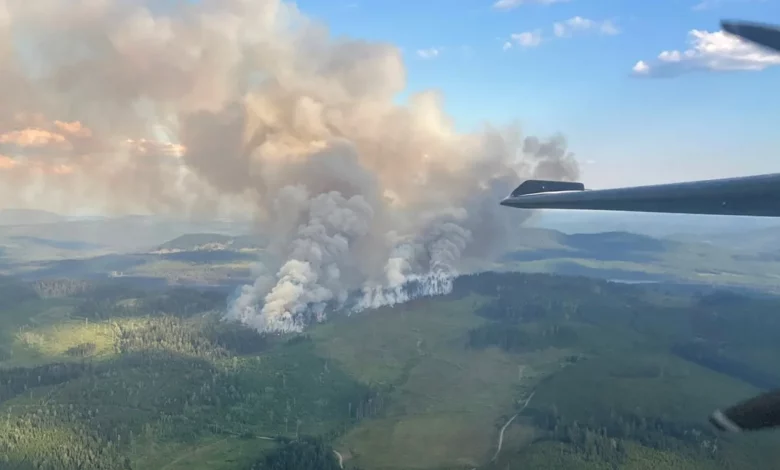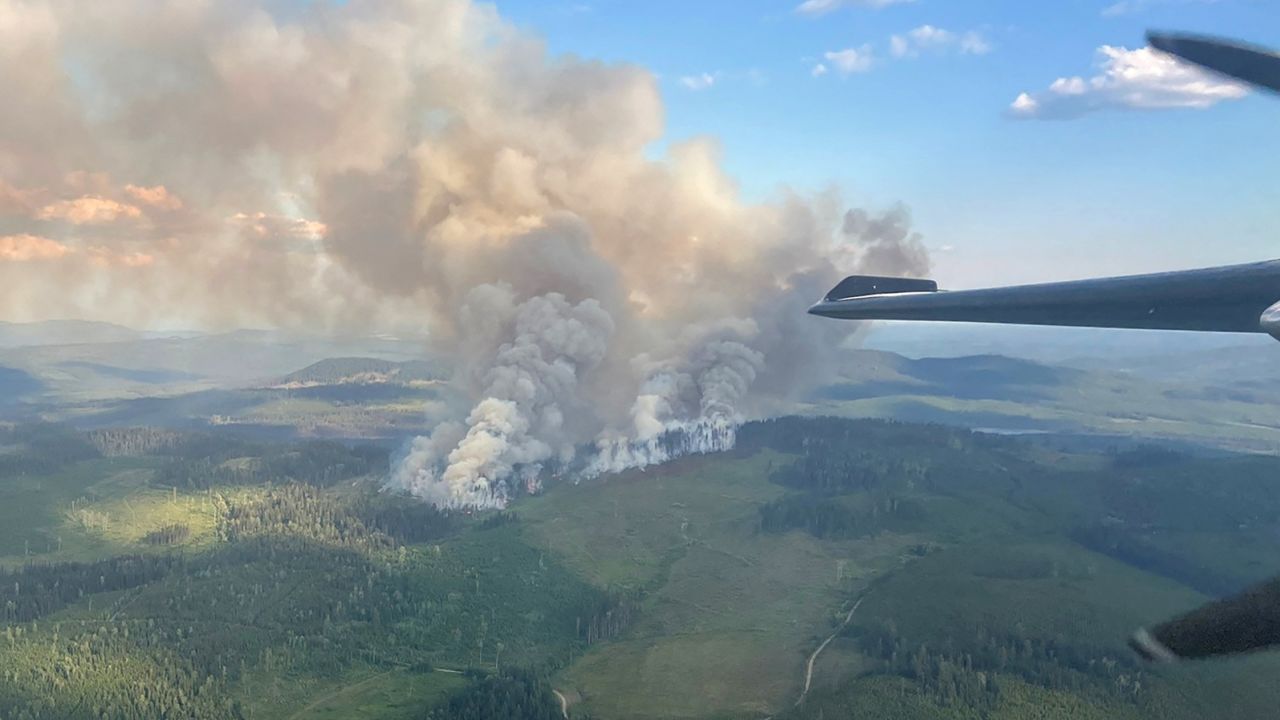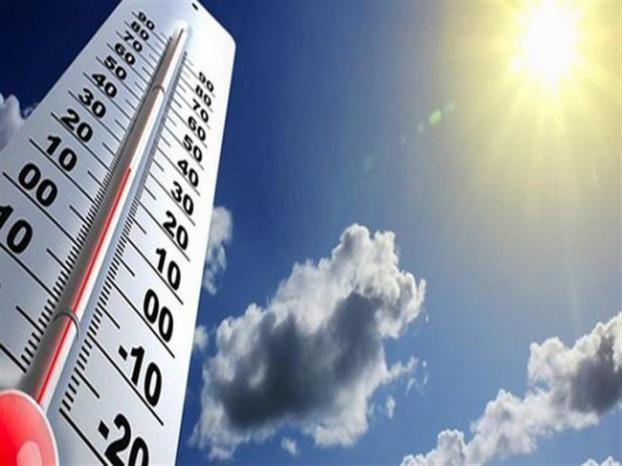
Tuesday continued to bring unprecedented heat to parts of the US, particularly in Texas, Arizona and Florida. And over the next seven days – at least – more than 85% of Americans will experience temperatures 90 degrees and higher.
The stifling forecast has pushed Connecticut’s governor to activate the state’s extreme hot weather protocol on Wednesday to provide cooling centers for vulnerable residents.
“We’ve experienced a pretty warm summer so far, but it’s expected to get particularly hot this week, including during the evening hours,” Connecticut Gov. Ned Lamont said.
And the heat has been affecting everyone: Last month was the hottest June on record dating back to 1850, according to a climate report by the National Oceanic and Atmospheric Administration.
“Globally, June 2023 set a record for the highest monthly sea surface temperature anomaly of any month in NOAA’s 174-year record,” the agency said. “June heat was not limited to the ocean surface; the Southern Hemisphere had its warmest June on record and the Northern Hemisphere tied 2019 for its warmest June.”
Scientists agree that human-induced climate change is the main culprit causing record high temperatures, which have led to hospitalizations and deaths in the US. Additionally, wildfires burning in Canada and US have been exacerbated by the unrelenting heat, tanking the air quality for many in both countries.
The vicious, weekslong heatwave has been inflicting triple-digit temperatures and unbearable humidity to parts of the West and South, where temperatures remained quite high even during night hours, leaving little room for relief. Ocean temperatures around Florida are so high that experts reported a mass event of coral bleaching, which could worsen if the extreme warmth persists.
After putting millions under heat warnings in the South and Southwest, the sultry heat is expected to move east into the Mid-Atlantic region by Thursday, where the air could feel more than 100 degrees Fahrenheit.
And before temperatures begin to subside next week, here are some of the impacts it had on communities in recent weeks.
A fatal heatwave

Dozens of people across Arizona and Nevada have died this year from the physical impacts of extreme heat.
In Arizona’s Maricopa County – home to Phoenix – 25 deaths have been reported to be heat-related so far this year as of Tuesday, the county said in a weekly report. Another 249 deaths are under investigation for whether heat was a cause.
Meanwhile, Clark County in Nevada reported at least 16 heat-related deaths, the county’s coroner told CNN on Tuesday. Las Vegas, located in Clark County, experienced temperatures above 110 degrees for 10 consecutive days, the last of which was Monday.
Extreme heat is the leading cause of weather-related deaths in the US, killing more people than hurricanes or tornadoes.
And it also leads to illnesses. Last week, at least 570 hospital visits in Arizona were related to heat-related complications, the state department of health services said.
“Fire departments and Emergency Medical Service (EMS) providers have reported treating an increasing number of patients for heat-related illness too. These incidents are only the tip of the iceberg. We urge Arizonans to take this extreme heat extremely seriously,” the department said in a statement Tuesday.
Making matters worse, five people are suspected to have died since June 1 from heat-related causes in national parks – more than an average entire year, park service news releases and preliminary National Park Service data provided to CNN show. No other year had five heat-related deaths by July 23, according to park mortality data dating to 2007.
Wildfires plummet air quality

Another health risk extreme heat has brought is the fueling of wildfires, which inevitably decreases air quality for millions.
As of Tuesday, there were nine wildfires in each of Arizona and New Mexico, according to the National Interagency Fire Center.
Also, smoke from hundreds of wildfires burning across Canada continued to waft south, tanking air quality and polluting air in Chicago and Detroit. Both cities were among the 10 top cities with the worst air quality in the world, according to IQAir, with Chicago ranking fifth and Detroit ninth as of early Wednesday morning.
“Today, air quality in the City of Detroit will be Unhealthy for Sensitive Groups (AQI Orange) range,” the Detroit health department said Tuesday. “The air quality is being impacted by the presence of fine particulate matter (PM-2.5).”
In addition to the poor air quality, Detroit is also facing extreme heat this week, when some areas are expected to feel as hot as 99 degrees Thursday and Friday, according to the city’s National Weather Service.
“Very hot and muggy conditions are likely later this week with heat index values approaching 100 degrees,” the weather service said on Twitter.
Extreme heat impacts oceanic ecosystem

The consequences of dangerously high temperatures have stretched beyond land.
The record-breaking heatwave led to surging water temperatures off Florida’s coast, where multiple reefs around the Keys area are currently completely bleached or dead.
The mass bleaching event unfolded in two weeks, according to coral experts, who said they expect the “complete mortality” of the bleached reefs in just a week.
Because it is extremely sensitive to temperature changes, experiencing too much heat for too long causes coral to bleach and turn white as they expel their algal food source and slowly starve to death.
The water is typically in mid-80s in the region, but experts have recorded 90-degree temperatures, according to Cynthia Lewis, who heads the Keys Marine Laboratory at the Florida Institute of Oceanography.
“It is very alarming,” she said in a news release.
Teams from the University of South Florida and the Florida Institute of Oceanography Keys Marine Laboratory conducted a rescue mission for more than 1,500 corals by harvesting them from at risk sites and bringing them into a temperature controlled laboratory.
Sweltering temperatures are also posing a risk to the Atlantic Meridional Overturning Current, a vital system of ocean currents which includes the Gulf Stream.
A study published Tuesday in the journal Nature found the current may collapse around the middle of the century or as early as 2025.
The AMOC is a complex tangle of currents that works like a giant global conveyor belt. It transports warm water from the tropics toward the North Atlantic, where the water cools, becomes saltier and sinks deep into the ocean, before spreading southwards.
It plays a crucial role in the climate system, helping regulate global weather patterns. Its collapse would have significant implications, including much more extreme winters and sea level rises affecting parts of Europe and the US as well as a shifting of the monsoon in the tropics.
Scientists uninvolved with the study told CNN the exact tipping point for the critical system is uncertain, and that measurements of the currents have so far showed little trend or change. But they agreed these results are alarming and provide new evidence that the tipping point could occur sooner than previously thought.
CNN’s Eric Zerkel, Laura Paddison, Robert Shackleford, Sara Smart, Joe Sutton, Dave Alsup, Michelle Watson and Derek Van Dam contributed to this report.



